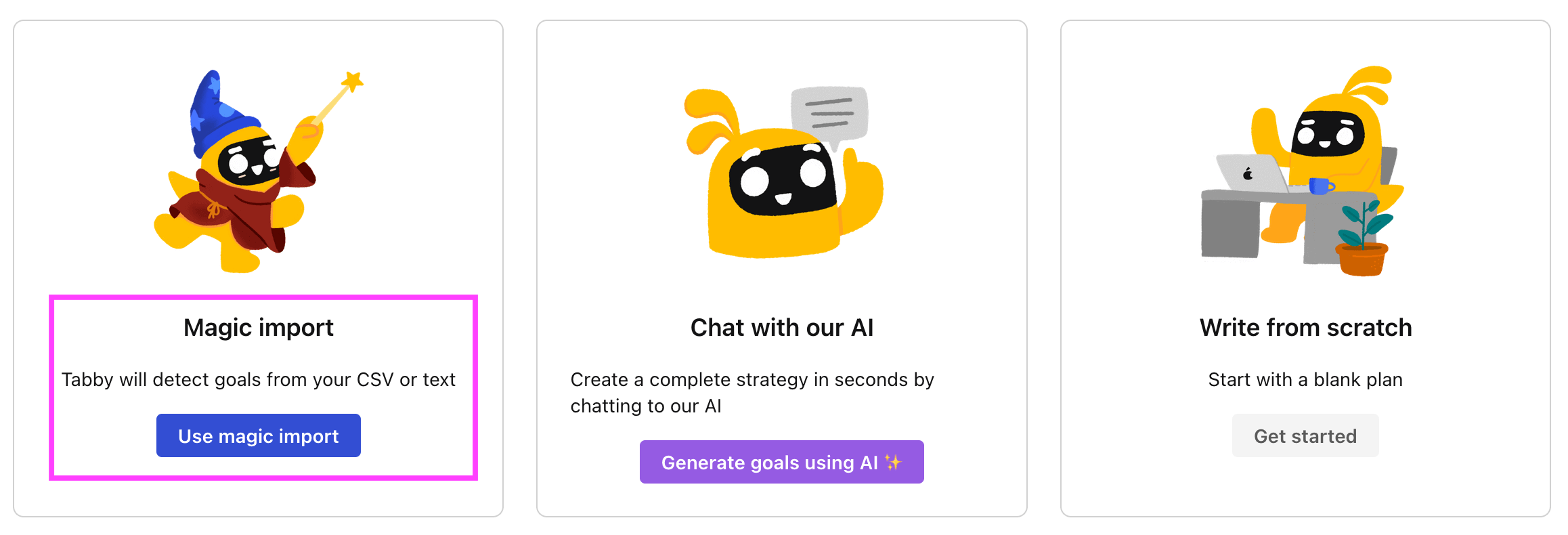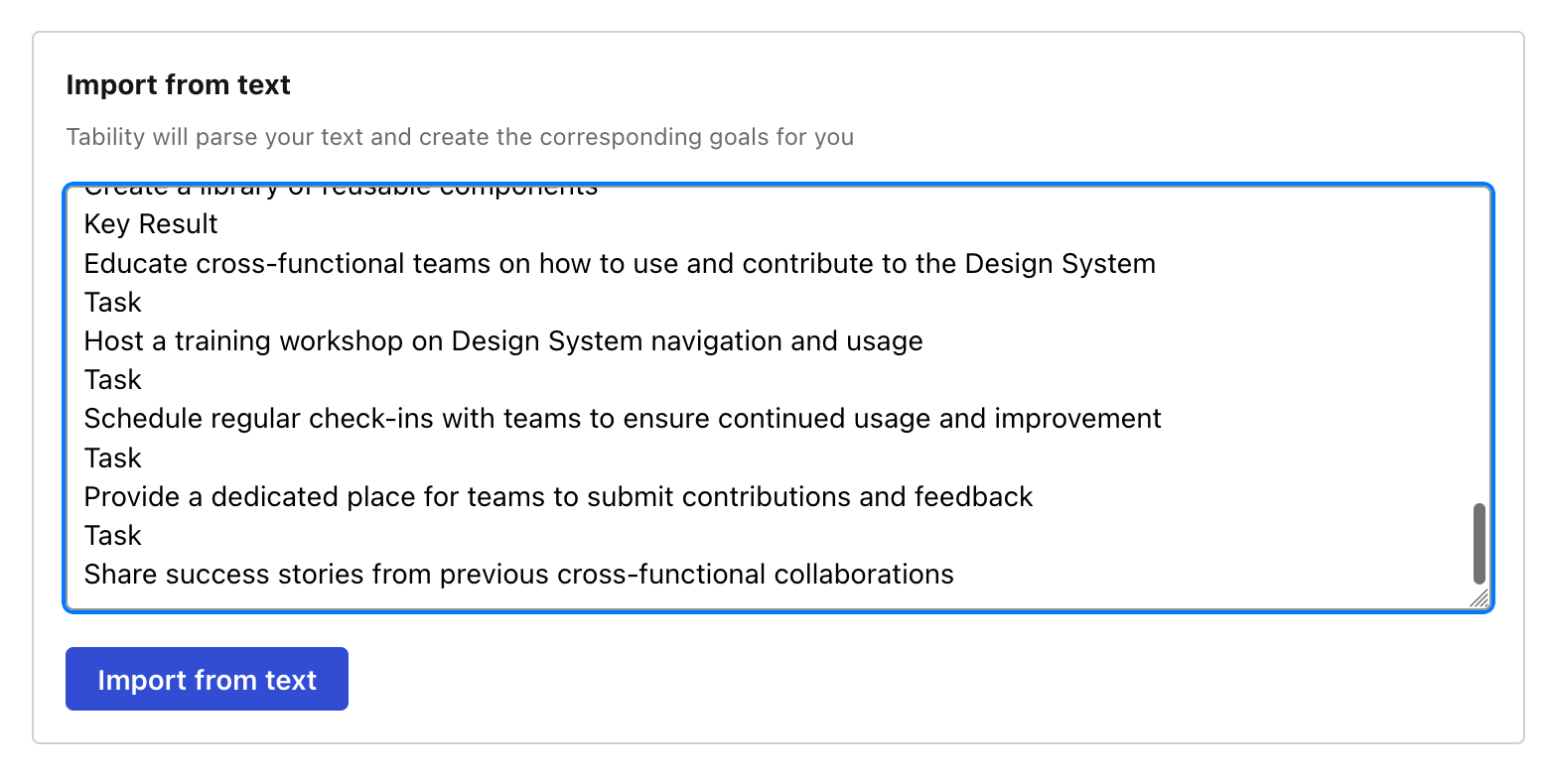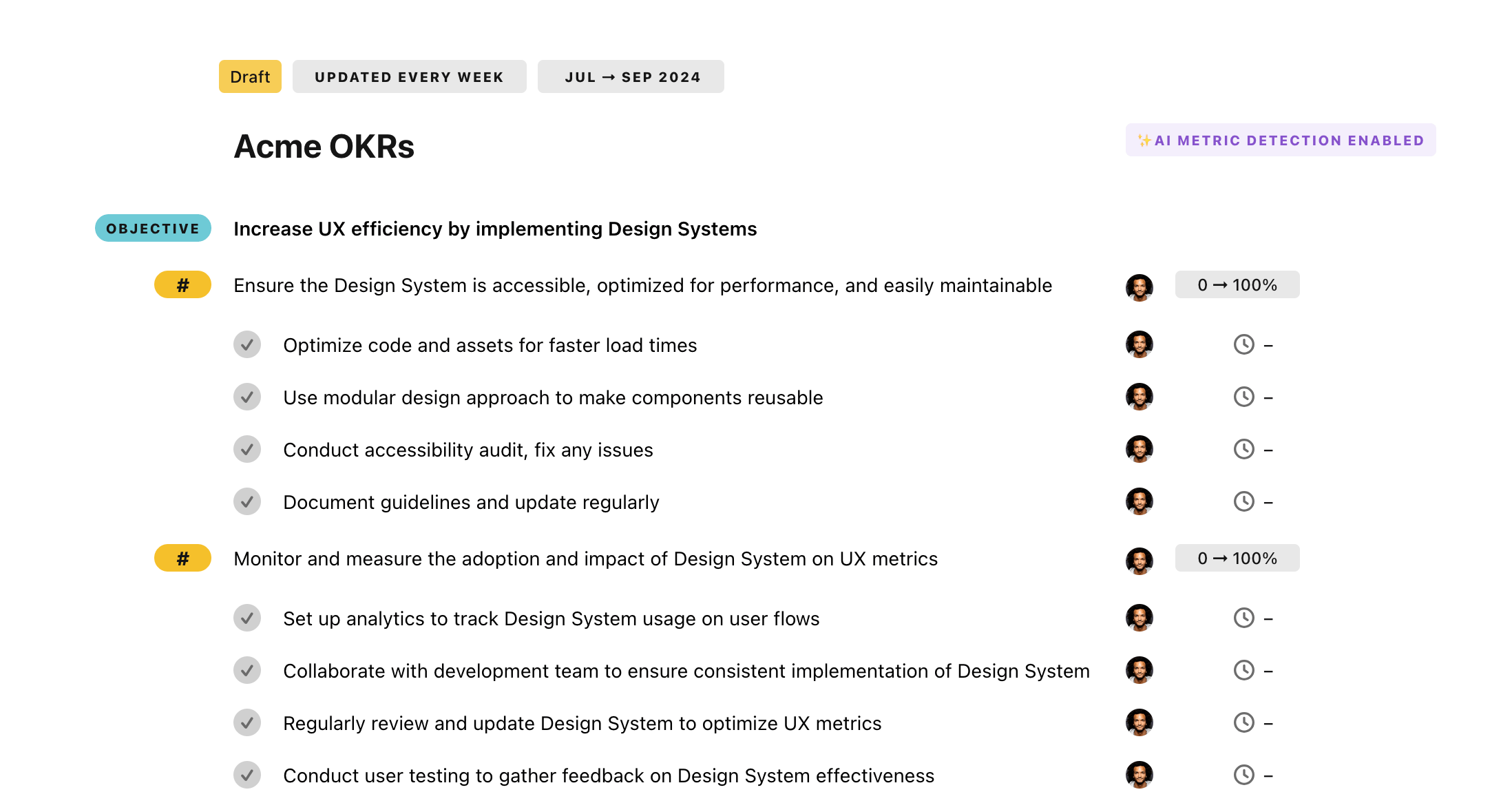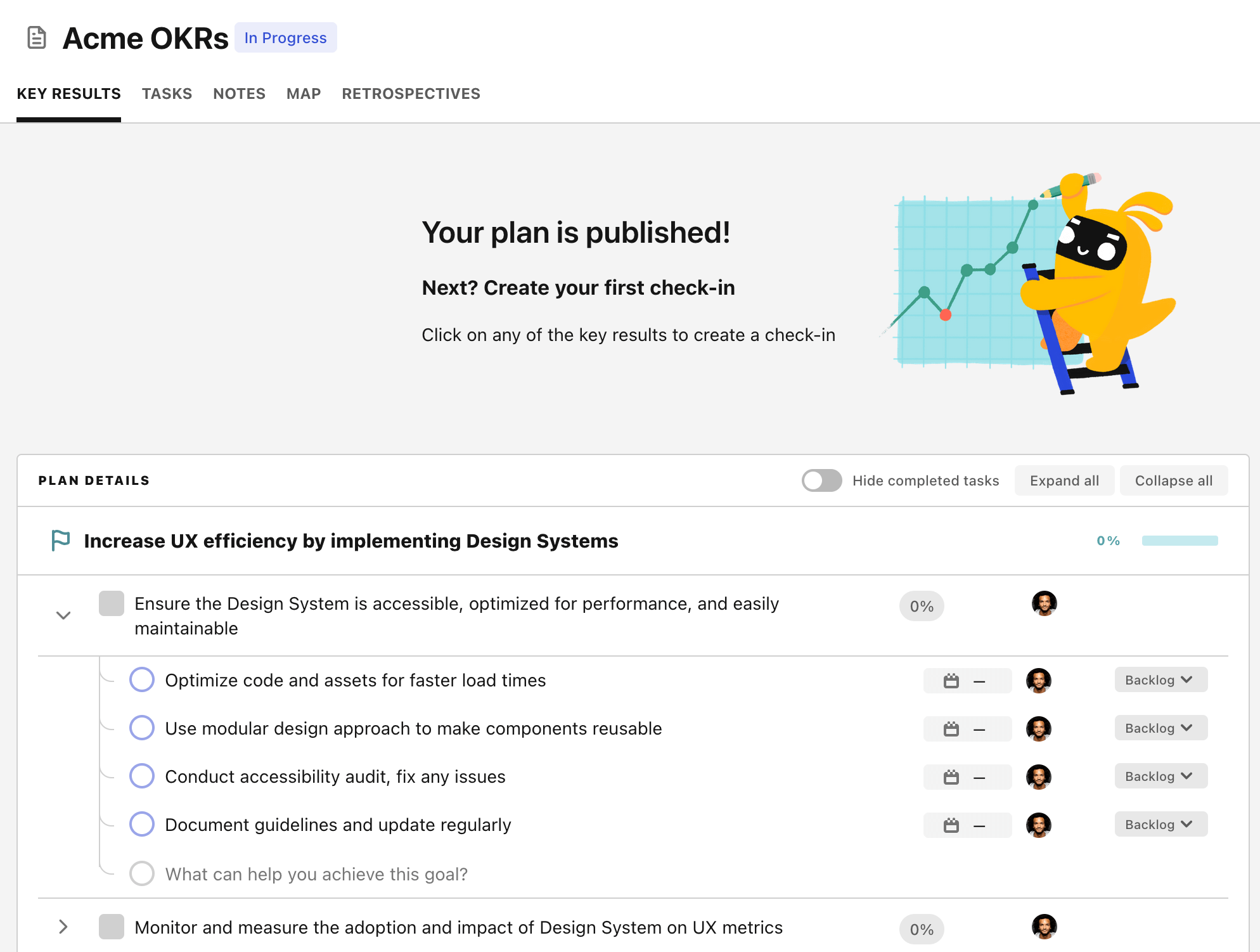OKR template to enhance ad performance with 10% higher CTR
Your OKR template
ObjectiveIncrease ad CTR by 10%
KRImplement 2 new ad targeting options
Consult with marketing team to determine feasibility and potential impact
Research industry trends and identify two new ad targeting options
Roll out second option to target audience and monitor engagement metrics
Implement and test first option, adjusting as needed for optimal performance
KRAdjust bidding strategy for higher ad placement
Increase CPC bids for targeted keywords
Monitor competitor bids and adjust bidding strategy accordingly
Review impression share and increase bids for low share
Test different ad formats and adjust bids based on performance
KRConduct 3 A/B tests on ad copy
Create two versions of ad copy with one variable changed
Identify variables to test in ad copy
Analyze data and make data-driven decision on ad copy
Implement A/B test and collect relevant data
KRIncrease ad relevance score by 2 points
Utilize more relevant ad copy and messaging
Improve targeting parameters for better audience matching
Monitor and adjust ad frequency to prevent ad fatigue
Focus on high-quality landing pages
How to edit and track OKRs with Tability
You'll probably want to edit the examples in this post, and Tability is the perfect tool for it.
Tability is an AI-powered platform that helps teams set better goals, monitor execution, and get help to achieve their objectives faster.
With Tability you can:
- Use AI to draft a complete set of OKRs in seconds
- Connect your OKRs and team goals to your project
- Automate reporting with integrations and built-in dashboard
Instead of having to copy the content of the OKR examples in a doc or spreadsheet, you can use Tability’s magic importer to start using any of the examples in this page.
The import process can be done in seconds, allowing you to edit OKRs directly in a platform that knows how to manage and track goals.
Step 1. Sign up for a free Tability account
Go tohttps://tability.app/signup and create your account (it's free!)
Step 2. Create a plan
Follow the steps after your onboarding to create your first plan, you should get to a page that looks like the picture below.

Step 3. Use the magic importer
Click on Use magic import to open up the Magic Import modal.
Now, go back to the OKR examples, and click on Copy on the example that you’d like to use.

Paste the content in the text import section. Don’t worry about the formatting, Tability’s AI will be able to parse it!

Now, just click on Import from text and let the magic happen.

Once your example is in the plan editor, you will be able to:
- Edit the objectives, key results, and tasks
- Click on the target 0 → 100% to set better target
- Use the tips and the AI to refine your goals
Step 4. Publish your plan
Once you’re done editing, you can publish your plan to switch to the goal-tracking mode.

From there you will have access to all the features that will help you and your team save hours with OKR reporting.
- 10+ built-in dashboards to visualise progress on your goals
- Weekly reminders, data connectors, and smart notifications
- 9 views to map OKRs to strategic projects
- Strategy map to align teams at scale